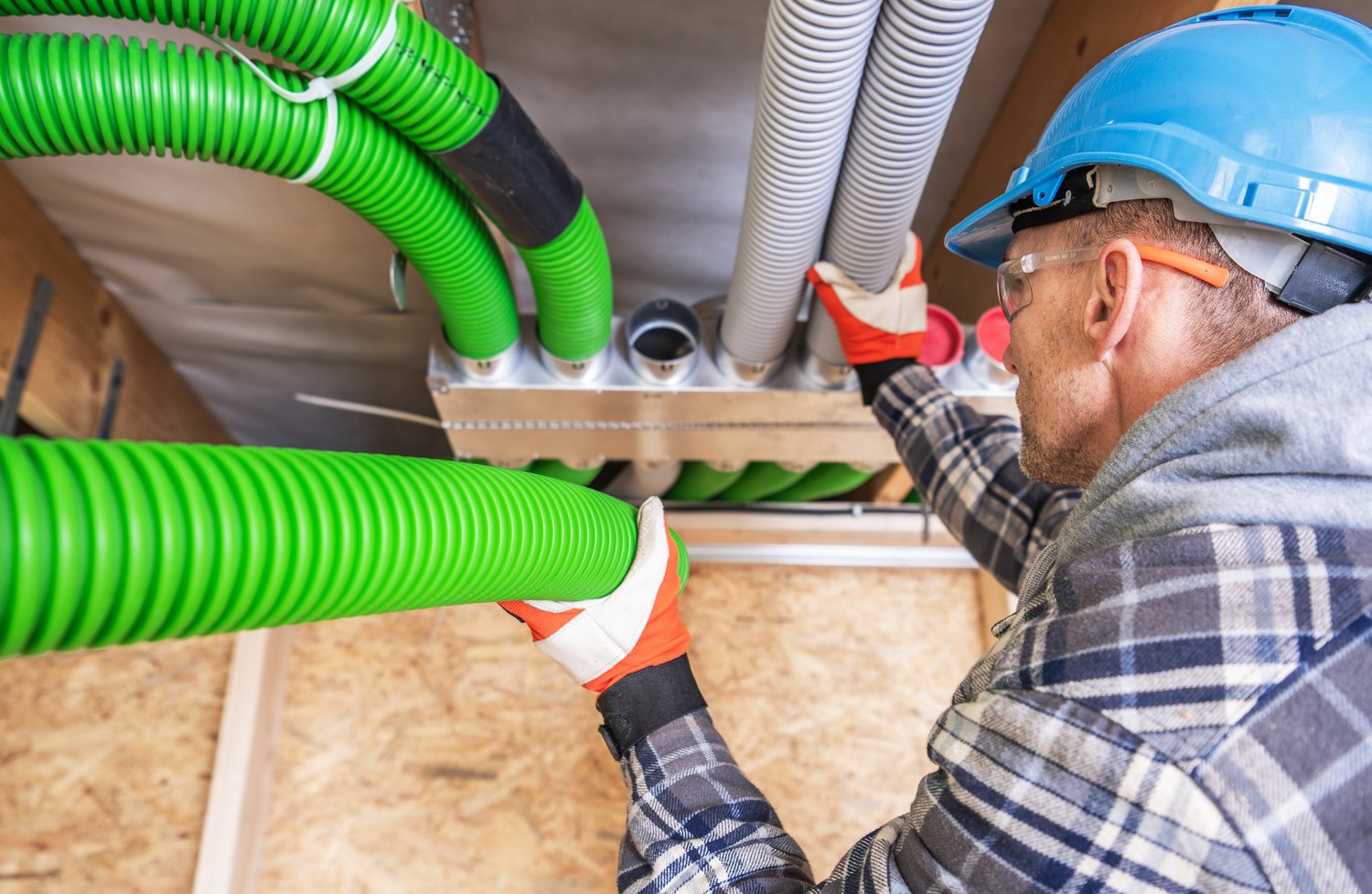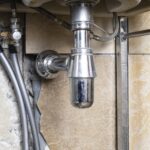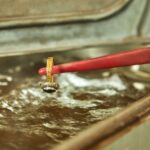Your home’s plumbing system is more like a network of roads, where each path plays a crucial role in directing traffic. The vent stack is one of its less glamorous but essential components, often overlooked until things go awry. Understanding its function and identifying issues early can prevent disruptions and costly repairs. In this article, we’ll explore how blockages in your vent stack might be impacting your plumbing’s performance and offer some practical DIY methods to keep your system running smoothly.
- Understanding Plumbing Vent Stack Issues: Discover how recognizing signs like slow drains and gurgling sounds can point to a vent stack blockage.
- Common Causes of Vent Stack Blockages: Learn about the typical culprits behind blockages, from leaves and debris to bird nests and changing weather.
- DIY Solutions for Resolving Plumbing Vent Stack Issues: Equip yourself with simple strategies and tools needed to clear blockages and prevent them in the future.
- When to Call a Professional: Identify when it’s time to seek professional help for more complex vent stack problems beyond DIY fixes.
By understanding and addressing vent stack blockages, you can improve the efficiency of your plumbing system and avoid unnecessary hassles. Whether you’re tackling this alone or with professional support, these insights will guide you toward a smoothly operating home environment.
Understanding Plumbing Vent Stack Issues: Signs of Blockage
The plumbing vent stack is a critical component of your home’s plumbing system. It plays a crucial role in maintaining proper air pressure within pipes, allowing wastewater to flow smoothly without creating vacuum locks. As part of the venting system, its efficiency is vital for ensuring that harmful gases do not enter your living areas.
When a vent stack becomes blocked, it can severely affect the overall performance of your plumbing. Common signs of vent stack blockage include emitting unpleasant odors, slow drainage, and gurgling sounds from your drains. These symptoms may suggest that air cannot freely circulate through your plumbing system.
If you notice water pooling in sinks or toilets backing up, it could be another indicator of a vent stack issue. Addressing these signs promptly can prevent more severe problems and maintain the efficiency of your plumbing.
Common Causes of Vent Stack Blockages
Understanding what causes vent stack blockages can help in preventing them. One of the most typical causes is debris build-up. Leaves, twigs, and other materials can accumulate over time, severely restricting airflow.
Moreover, animal nests can obstruct your vent stack. Birds and squirrels find these stacks an inviting place to build their homes. Their nests can ignite a blockage, leading to significant plumbing issues.
Environmental factors, such as a heavy accumulation of snow or ice, can also block the vent stack. These elements might cover the vent’s opening, impeding its function. Recognizing these causes assists in implementing preventative measures to maintain ventilation efficiency.
DIY Solutions for Resolving Plumbing Vent Stack Issues: Blockage Removal and Prevention
The plumbing vent stack plays an integral role in ensuring the proper function of your home’s plumbing system. Addressing blockages promptly is vital for maintaining water flow efficiency and preventing backflow into your home. Fortunately, there are several DIY methods you can employ to tackle plumbing vent stack blockages.
To remove blockages effectively, start by assessing the situation from the roof, using a flashlight to inspect the vent stack for visible obstructions. In many cases, a basic plumbing snake can dislodge debris that clogs the vent. Insert the snake into the opening and gently maneuver until you feel resistance. Twist the snake to break up the blockage and remove any material trapped inside the coil.
Preventing future blockages is equally important. Regularly inspect the vent stack to ensure it’s free from leaves, bird nests, or other debris. Installing a vent cover can be a simple yet effective measure to protect against environmental factors and wildlife that might interfere. Additionally, maintaining the surrounding area by trimming overhanging branches ensures proper airflow into the vent stack.
Tools and Materials for Addressing Plumbing Vent Stack Issues: Effective Blockage Solutions
Addressing vent stack issues yourself requires the right tools and materials. These essentials ensure that DIY maintenance can be carried out safely and effectively, optimizing the vent stack’s performance.
To start, a plumbing snake or auger is crucial for breaking apart stubborn blockages. It allows for deep cleaning of the vent stack interior. A small but powerful flashlight helps you inspect the opening for signs of blockage. Using a ladder provides safe roof access when inspecting or cleaning the vent stack.
Consider purchasing a vent stack cover. This accessory protects the opening from environmental hazards such as leaves or bird nests. Donning sturdy gloves ensures safety as you handle blockages or debris in the stack. With these tools and preventive measures, maintaining your plumbing vent stack becomes straightforward and manageable.
When to Call a Professional for Plumbing Vent Stack Issues: Advanced Blockage Solutions
While many plumbing issues can be tackled with DIY solutions, there are times when it is wise to seek professional help. Recognizing when the problem with your vent stack requires expert intervention can save you time, money, and further complications down the line.
One clear signal is the persistence of the blockage despite attempts to clear it using standard methods and tools. If you’ve repeatedly used a plumbing snake or auger without success, this could suggest a more severe or complex obstruction.
Unusually strong or foul odors emanating from your plumbing system, especially in conjunction with other signs of blockage, indicate urgent attention. These smells might suggest significant clogs or even the presence of harmful gases that need professional attention.
Professional plumbers are also necessary when dealing with structural problems in the system. Cracks or visible damage to your vent stack may not only block the system but also compromise home safety. Experts can address these concerns effectively, ensuring structural integrity.
Additionally, persistent water flow issues such as slow drainage or frequent backups may suggest internal problems that a professional can diagnose accurately. Experienced plumbers have the right tools and technology, like cameras, to inspect the full plumbing system and identify hidden problems.
Don’t hesitate to reach out to a professional service if these advanced issues arise. Not only will this ensure a lasting solution, but it will also maintain the long-term health of your plumbing system.
FAQ: Plumbing Vent Stack Issues
What is a plumbing vent stack?
A plumbing vent stack is a vertical pipe that helps maintain air pressure in your plumbing system, allowing water to flow smoothly.
How can I tell if my vent stack is blocked?
Signs of blockage include slow drains, gurgling noises from pipes, and sewer odors in your home.
What are common causes of vent stack blockages?
Blockages can occur due to debris, animal nests, or environmental factors like ice build-up.
Can I clear a blocked vent stack myself?
Yes, with basic tools and knowledge of preventative measures, many blockages can be addressed DIY-style.
What tools do I need for clearing a vent stack?
You will need tools like a plumber’s snake, garden hose, and potentially a ladder for access.
When should I call a professional for vent stack issues?
If DIY efforts are unsuccessful or the blockage persists, calling a professional is advised for a lasting solution.





